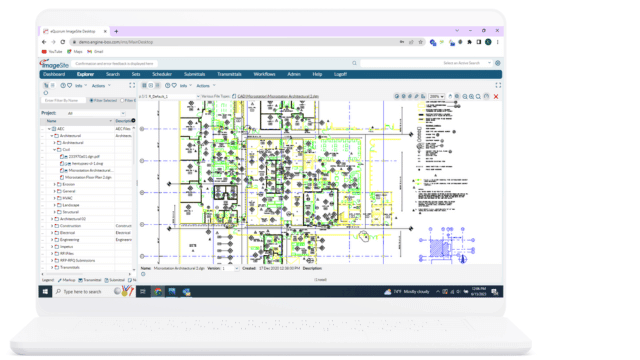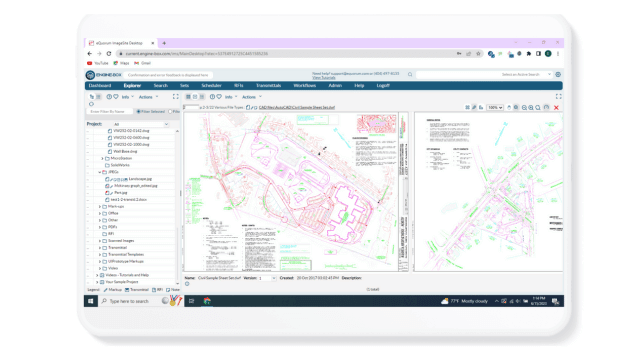Using Big Data To Improve Operational Efficiency
Using Big Data To Improve Operational Efficiency
There is a lot of buzz around “big data” these days, and with the abundance of new software and data-related technologies available, it’s no wonder organizations are exploring new ways to use it. One key part of “big data” is unstructured data. This data can be extremely valuable to research and large organizations as well as those with limited resources are looking for new ways to accurately collect and analyze it and improve their operational efficiency.
What is big data and unstructured data?
Data is typically used to answer fundamental questions about a business’s operational efficiency. If you Google the term, “Big Data” is defined as “extremely large data sets that may be analyzed computationally to reveal patterns, trends, and associations, especially relating to human behavior and interactions.”
Using unstructured data and where to find it
Data mining is often synonymous with high costs, making it intimidating for many small businesses. Organizations, however, typically overlook some of the greatest data mining opportunities available to them often at little to no cost. Rather than spending excessive capital on expensive data management software, businesses can use their existing DMS or ECM solutions to collect and analyze valuable “unstructured data.”
While quantitative analysis is considered to be more precise by nature, it utilizes a statistics-based approach to data interpretation, which can often be misleading when not properly assessed. (We all know about lying with statistics.) Even models showing strong evidence of homoskedasticity may not be effective for determining the success of operational activities since, as you know, correlation doesn’t imply causation. This is not to say you should disregard statistical analysis entirely, but rather assess alternative methods of data collection and analysis.
Businesses can perform qualitative analyses to find solutions to bottlenecks and other operational shortcomings using data derived from the files and workflows used in day to day activities. For those using an enterprise content management system, finding this data is easy.
Indexing and search and tools can be used to retrieve information from unstructured data such as files, documents, and workflows, reducing the amount of time it takes to access pertinent data. This, on its own, can increase the efficiency of data analyses by significantly reducing the document access time. Unstructured data can also provide great insight into the efficiency of operations by displaying how often files are accessed and how long it takes to find the right data.
What are the cons?
Before further outlining the benefits of qualitative analysis, we must first discuss the cons. Often, HR departments have competing agendas and may be influenced by both unconscious and conscious biases, with one of the most common biases being sample bias.
For example, when reviewing the efficiency of a given workflow, researchers might omit individuals with certain job titles from an internal survey, despite their potential relevance. Since this bias creates inaccuracies in the data, the researcher may fail to realize the true implications of a bottleneck caused by inefficient workflow processes.
Confirmation bias may also factor into the ineffectiveness of a study. If the researcher is looking to interpret data that supports their hypothesis, then it is possible the researcher will hand-pick data supporting their beliefs, whether the data is an accurate representation of the truth or not.
For this reason, we would recommend researchers take truly objective approaches to their research and review only data relevant to a process. These biases can all be significantly reduced through peer review and strict analytical methodology.
Can a DMS/ECM help with research?
Yes – a document management system isn’t simply a document repository, but also a great way to track and record both qualitative and quantitative data. ImageSite includes audit trails of all actions associated with workflows. It is a cost-effective way for users to reliably monitor and track engineering and business processes for the sake of both efficiency and research.
Additional EDMS Features
Our EDMS solutions
ImageSite and EngineBox are eQuorum’s robust workflow and document management solutions, created to help workers manage their essential workflows while maintaining complete control over their engineering files and documents. Not only do they provide a secure collaboration site for workers, but they also help organizations manage document distribution with third parties like vendors, contractors, and customers. Both systems are offered at a competitive price, enabling organizations to get a quick return on their investment by providing the features and functionality needed to help organizations improve efficiency, productivity, and collaboration. Companies can choose from concurrent user subscriptions or named user subscriptions, ensuring organizations have subscription options that make sense for their business.

ImageSite®
Our single source engineering workflow and document management system. Built in HTML5 so there is no software to deploy to client computers or mobile apps to download. Offered as an On-premise or Private Cloud system.
EngineBox™
EngineBox is a cloud based workflow and document management version of ImageSite that resides outside the corporate network.
Our EDMS solutions
ImageSite and EngineBox are eQuorum’s robust workflow and document management solutions, created to help workers manage their essential workflows while maintaining complete control over their engineering files and documents. Not only do they provide a secure collaboration site for workers, but they also help organizations manage document distribution with third parties like vendors, contractors, and customers. Both systems are offered at a competitive price, enabling organizations to get a quick return on their investment by providing the features and functionality needed to help organizations improve efficiency, productivity, and collaboration. Companies can choose from concurrent user subscriptions or named user subscriptions, ensuring organizations have subscription options that make sense for their business.

EngineBox™
EngineBox is a cloud based workflow and document management version of ImageSite that resides outside the corporate network.
The eQuorum Customer Promise
In 2005, eQuorum developed the first all browser-based EDMS. The system, although for on-premise use, was still created to remove client software and JAVA from user computers and allow users to have a single viewer based on the simple navigation functionality of browsers. Today, eQuorum provides that same application in a private Cloud or a SaaS Cloud option. We can do this because we are, and have always been, browser-based, understanding the enhanced speed, security, and usability of this technology.
With the abundance of document management systems on the market today, there’s no doubt that choosing the right Cloud document management software can be a difficult decision. eQuorum is here to provide a comprehensive, powerful, and most importantly – affordable Cloud document management solution. We believe in providing real value to our customers by eliminating unnecessary costs, providing industry-leading functionality, and equipping your team with the right tools using cutting edge technology to bring your products to market faster.
eQuorum®
We specialize in engineering workflow and document management. Our comprehensive, yet easy-to-use software provides the solution to manage data from design to manufacturing and production, to sales, support and administration.